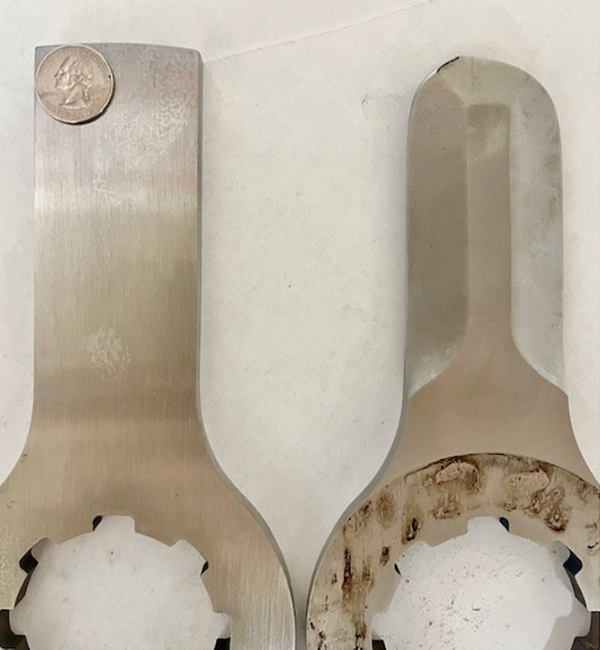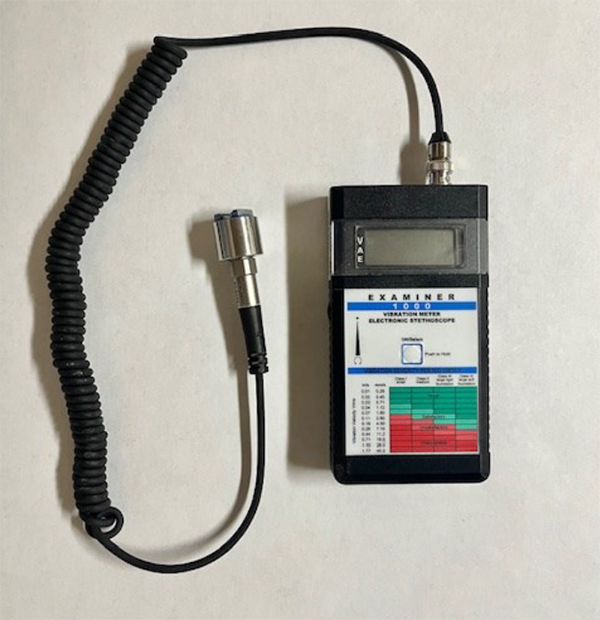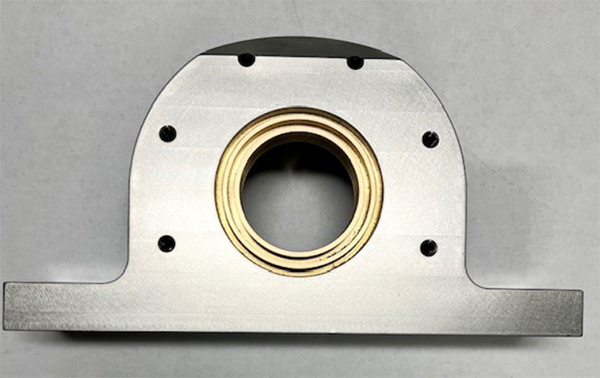IPA designs and manufactures powder processing equipment known for strong performance & durability. Specifically, the IPA Mill requires minimal maintenance & is built for the most rugged applications. Although routine inspections are always advised, mills will occasionally require replacement parts to sustain optimal performance levels.
Frequently asked questions include:
When should I replace the blades?
How often do I grease the bearings?
How much vibration is too much?
What process complications should I be aware of?

Over time, these common questions often come up and can be resolved through various checks & balances during mill maintenance. Below are general guidelines to minimize vibration over time and keep your mill operating at peak efficiency.
Rotor Components

1. Blades: These are a critical component for consistently achieving the objective particle size. As the blades become worn over time, a higher percentage of fines is created and/or the system rate will be lower. A simple test to determine blade wear—hold a quarter up to the rounded & warn blade edge. If the curve of the blade matches the curve of the quarter, it is time to replace the blades.


2. Bearings: Properly maintained bearings allow the mill to run smoothly. When bearings start to fail, there will be excessive temperature & mill vibration. All factory assembled rotors leave our facility vibration free. When the vibration analysis exceeds 0.9 millimeters per second, it is time to prepare for system shut down and replace the bearings.

3. Bearing Housings: These typically have a long life, however excess vibration can cause the inner race of the bearing to go out of tolerance. If the tolerance is slightly out of design specification, the bearing housing can be repaired. Housings beyond repair will need to be replaced. Although inserts exist, they are a temporary fix.

4. Shaft: This is commonly the most overlooked component of a rotor repair. Shaft run-out can greatly affect the performance of the mill & bearing life. When rebuilding a rotor, IPA carefully inspects the shaft run-out and the bearing seat tolerance to ensure it meets design specifications.
IPA’s R&R Process
IPA’s expert team conducts a thorough tear down and inspection of each rotor assembly. Both bearing housings & shaft are carefully inspected to ensure they meet design specifications. If either is out of spec, IPA will suggest reworking the component or opting for a replacement. Blades and bearings typically show the most wear and tear and are routinely replaced with each rebuild.
IPA ensures that factory rebuilt rotors meet the same high standards as brand new rotors. We maintain a rigorous and uniform process, utilizing quality components and carefully balancing the blades. Understanding our customers’ needs is crucial, as it guides our team in configuring the assembly to best suit their application.
Statically Balancing the Blades
Static balancing is completed in order to balance the blade weight across the rotor. All mills are equipped with blades in factors of four. Each blade is individually weighed & grouped in a set of four, so each group weighs approximately the same amount. This is a critical step to provide the most uniform weight distribution along the rotor & to extend bearing life.
Dynamic Rotor Balancing
Dynamic balancing is completed by a skilled professional with the proper equipment, and never recommended for an inexperienced person. The purpose is to reduce vibration at higher mill speeds by removing a specific amount of weight from the flywheels. This significantly improves the bearing and shaft life of the mill.
Lubrication Recommendations
Powder Processing Mills are used under a wide variety of conditions. Based on frequency of operation and other factors, the below schedule is a guide and can be adjusted based on room atmosphere conditions and cleaning SOP’s.
| Operating Condition | Lubrication Guide |
| Intermittent Daily Use | 6 months |
| Continuous Daily Use | 3 months |
| 24 hours a day | Monthly |
Common Maintenance Errors:
– Over Greased Bearings
– Improper Belt Tension/Alignment
– Operating with Excessive Vibration
– Improper Replacement of Blades (In-field)
The above errors can all lead to shortened rotor life.
